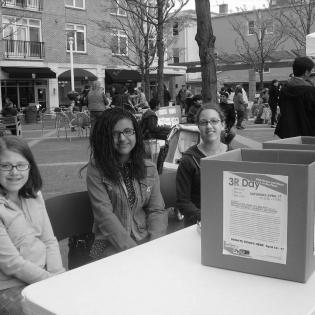My Personal Best
Learners discuss what it means to do their personal best. They find, through a simple physical activity, that they can do a good job in something, but they still have more talent and drive to do better if they persevere. They recognize that perseverance can help them do their personal best.
The learner will:
- define perseverance and relate it to personal best.
- tennis balls for every two people
Instructions
Anticipatory Set
Tell the learners to stand up and reach for the ceiling as high as they can. As they are reaching, say, "Now reach three inches farther." As they push themselves to reach higher, say, "I thought you were already reaching as high as you could. Where did you get the extra three inches?"
Ask, "How do you feel when you actually do your personal best (your best effort based on your ability and opportunity) on something? Why do you feel that way?"
Discuss the difference between doing a good job and doing your personal best.
Ask them to reflect on when they may choose to make the effort to do their personal best. Can they do their personal best in all areas? They may work hardest in sports, homework, being a good friend, or giving and serving in the community. Discuss what motivates them to do their personal best.
Pair up learners and give each team a tennis ball. Tell them they will start close together and toss the ball back and forth with their non-dominant hand without dropping it. They move back a little each time they catch and throw successfully. If they drop the ball, they must move close together and start over.
As they practice, have them set a goal of how far apart they can get without dropping. They may communicate to improve their strategy and encourage each other to do their personal best.
Give them a one-minute heads-up before having them measure the distance of their most successful throw.
When they are seated again, ask them to define perseverance. It may be defined as "sticking with something even when it is difficult." Discuss how perseverance is related to personal best. They may note that when throwing the ball, they made some mistakes at first, but they kept at it and got better and more careful the more they stuck with it.
Discuss what makes perseverance a positive character trait. Ask for examples of people who have persevered in different areas, such as education, sports, and science. Ask, "In what way can acts of perseverance be good for society?
Philanthropy Framework
-
Strand PHIL.II Philanthropy and Civil Society
-
Standard PCS 01. Self, citizenship, and society
-
Benchmark MS.4 Describe the characteristics of someone who helps others.
-
-
Standard PCS 02. Diverse Cultures
-
Benchmark MS.2 Describe the importance of hearing all voices in a community and respecting their right to be heard.
-
Benchmark MS.3 Give an example of how philanthropy can transcend cultures.
-
-
-
Strand PHIL.III Philanthropy and the Individual
-
Standard PI 01. Reasons for Individual Philanthropy
-
Benchmark MS.3 Identify and give examples of stewardship in cultural traditions around the world.
-
Benchmark MS.4 Identify and describe the actions of how citizens act for the common good.
-
Benchmark MS.5 Describe the responsibility students have to act in the civil society sector to improve the common good.
-
-
